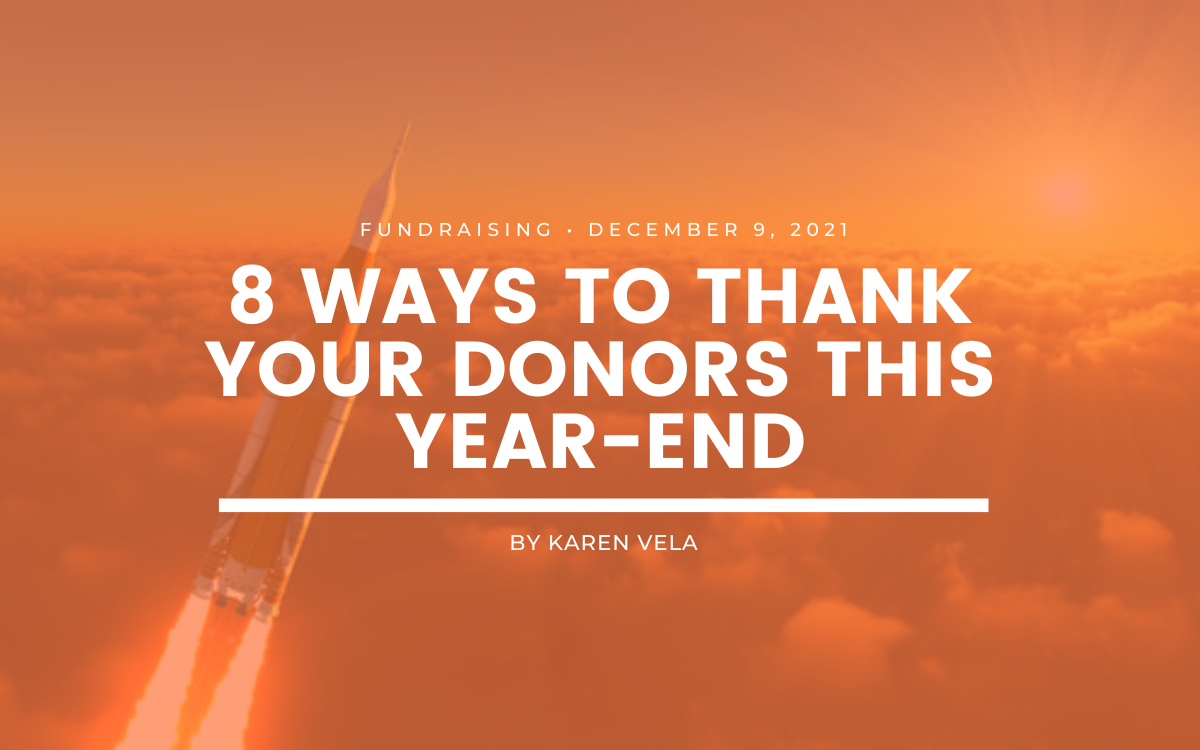8 Ways To Thank Your Donors This Year-End
3 min to read ✭ In this post, you'll learn how to show gratitude and appreciation towards your donors this year-end giving season.
Thanking your donors is one of the best ways to engage with them, build community and trust, and increase your chances of receiving a second gift. This isn’t just speculation, the proof is in the data! According to GuideStar, donors are 400% more likely to give again if thanked within 48 hours and 68% of donors agree that knowing how their donation makes an impact is important to their gift. Something as simple as a thank you can make a HUGE difference in your campaign results. Let’s dive into a couple of different ways you can show gratitude this year-end.
Handwritten Notes
People really do appreciate a good old-fashioned handwritten note! Taking the time to sit down and craft a personal message to a donor will definitely show them that you appreciate them. This can be time-consuming, so consider choosing this method for specific donors that you feel deserve it.
Social Media
One of the best things about social media is how shareable it is! Give a shoutout on your platforms and you’ll accomplish thanking your donor and possibly reaching a larger audience if the receiver decides to share.
Video Message
This is one of Community Boost’s favorite methods to show appreciation towards our clients and partners! Every year we create a themed holiday video with a personal message from our team that we send out via email. Have your CEO, team, or board members record a thank you message to your donors and make sure it makes its way to them. This is a great way to show some personality, have a little fun, and it allows the donor to get an inside look at who your organization really is.
Direct Confirmation Email
You’d think I wouldn’t need to mention this one, but there are so many nonprofits out there that don’t even send a basic ‘thank you for donating’ email. This is an absolute must because donors expect to receive one, and you don’t want to start off on the wrong foot by not meeting this expectation. Get creative with your emails, and try to make them stand out from the rest. Need some ideas? Check out this guide full of resources.
Virtual or In-Person Event
This is a unique way to say thanks, but it does require a little more coordination. Hosting an event is a great way to build community and trust with your donors and increase your retention. It also gives you the opportunity to give thanks in a face-to-face setting which can go a long way.
Send a Gift or Reward
Send your donors a thank you gift with some goodies or swag. Add that personal touch by choosing items that are related to your cause or have your cause’s branding on them. If you’d still like to send a gift but would like to avoid assembling and shipping items, opt to send them a redeemable discount, gift card, or reward towards a shop item.
Go Behind the Scenes to Show Impact
As we mentioned above, donors are more likely to give if they know where exactly their donation is going. Show your donors where their gift went by giving them a behind the scenes look with a tour, by sending photos or video, and try to be as specific as you can. It would be so meaningful to show them how they were a part of your mission and story!
Launch a Gratitude Campaign
Gratitude campaigns are when you show appreciation via ads, email, or other marketing channels and demonstrate the impact of the donations you have already received. These campaigns tend to work well when done right because not only are you publically thanking all those that have contributed to your cause, you are also able to reach new potential donors with your story. Play into that 68% of people that want to know where there money is going! We worked with the Citizens Foundation to create a gratitude campaign using Facebook ads and the results are worth reading about.
No matter which method you choose to thank your donors this giving season, make sure it’s at the top of your to-do list! Gratitude is the most important steps towards increasing your donor retention.





